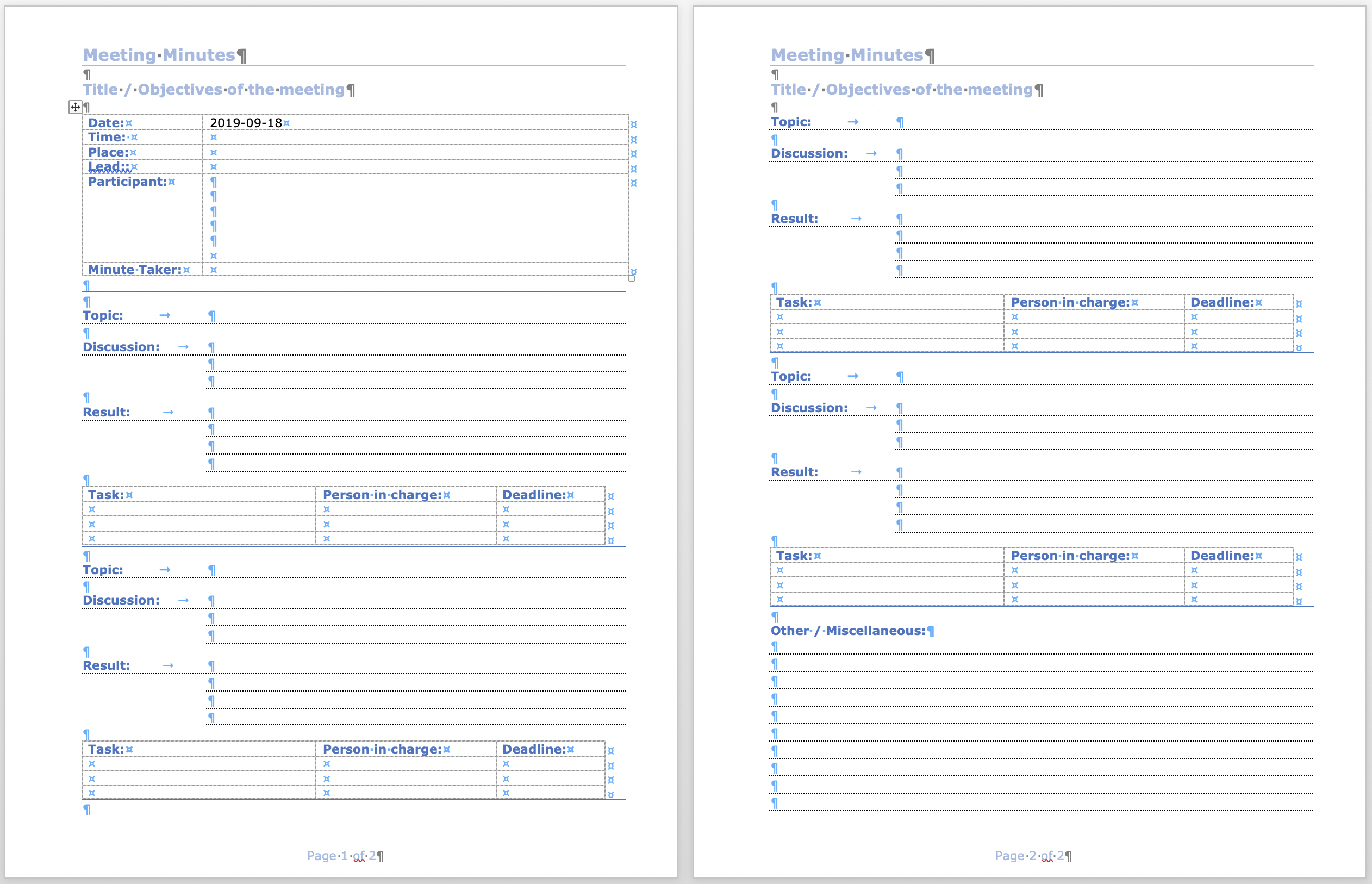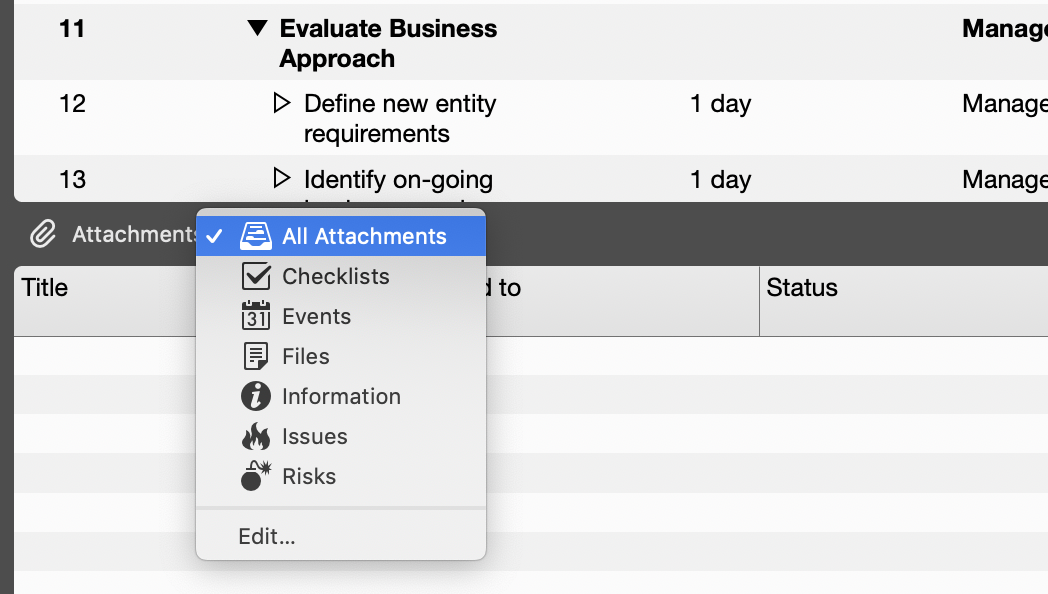Clear and Efficient Project Communication
Thanks to Good Meeting Minutes

Write minutes that don't just disappear into the drawer, but offer real added value.
Sooner or later it will hit everyone someday - although not with pleasure: writing the minutes of a meeting. If not clarified beforehand, one of the attendees will be selected to take notes at the beginning of each meeting at the latest. The means of choice are manifold, some still prefer a pen and paper, others use text programs on notebooks or tablets, and others record a meeting without further ado.
What is the Purpose of Meeting Minutes?
What Types of Meeting Minutes are There?
What Should the Minutes of a Meeting Contain?
Merlin Project for Writing Minutes
Tips for the Perfect Meeting Minutes
Helpful Links
What is the Purpose of Meeting Minutes?
The minutes of a meeting (MOM) or session record its content. It is not a matter of meticulously writing down every minute, every wording. It is about identifying the most important points and keeping them short, concise and precise.
- What was discussed and decided?
- What is to be done next?
- Who has to complete which task by when?
Nevertheless, many people consider it an unnecessary effort and do not recognize the sense behind it. In particular, because they often give the impression that they are not read and disappear into dusty folders or the shallows of e-mail inboxes. However, if correctly implemented, protocols are absolutely useful and support a clear and efficient project communication:
-
Meeting minutes summarize what has been discussed.
In meetings lasting hours, hardly anyone remember everything that was discussed. However, you can read everything in the minutes afterwards. -
Meeting minutes inform absent participants.
Not everyone affected by the decisions and discussions in a meeting is always present. Attempting to share all information orally carries the risk of misunderstanding due to "Chinese wispers". With the help of the meeting minutes it is not only easier, but also much faster and more comprehensive. -
Meeting minutes create clarity.
Should there be any discrepancies afterwards as to who bears which responsibility or why which decision was made, this can easily be clarified - a look at the minutes suffices. -
Meeting minutes record the measures and deadlines to follow.
Who has what task to complete and by when can be determined using the log and it is therefore easy to keep track of agreed measures and deadlines.
What Types of Meeting Minutes are There?
There are many types of reports. The main difference is which things are recorded in the minutes and to what extent. Typical types of meeting minutes are the result or short minutes, the progress report and the verbatim transcript, as well as in rare cases the record from memory.
-
The result minutes contain only brief information on the content of the meeting and focus on the actual results. What decisions or resolutions have been taken? What tasks are distributed and delegated to whom?
-
With a progress report, the most important extracts are reproduced, but not literally, but analogously. It contains the different discussions, the associated arguments and counter-arguments. It shows the course of the conversation and the decision-making process.
-
The verbatim transcript is the most detailed and comprehensive protocol ever. In addition to the speeches of the speakers, all other events during the meeting are also recorded. In this case it is a good idea to record the meeting as not to omit any details.
-
The record from memory is usually written as a kind of emergency solution. It is subsequently drawn up "from memory", for example because no agreement has been reached on taking the minutes.
The most frequently used type for project meetings is the result minutes or progress report. In addition to the differences described above, both have in common that they are intended to filter out the important information from secondary information.
What Should the Minutes of a Meeting Contain?
In addition to the contents of the session described above, other basic information about the meeting is also required in the minutes.
- Start your minutes with the date, place, names of the participants, name of the person taking the minutes (i.e. your name) and the topic of the meeting (title/objective)
- Then the individual points that are addressed and discussed follow - with associated remarks, i.e. allocation of tasks, decisions, but also counter-arguments and questions that have not yet been clarified. If you have an agenda for the meeting, it is helpful to orientate yourself on these points.
- Note the next steps, such as when the next meeting will take place to discuss progress or what results should be achieved by a certain time.
Write your minutes in the present form, it gives the reader the impression of being there.

Use our Word template to structure everything clearly. You can download it free of charge here.
Merlin Project for Writing Minutes – Everything in One Place
Do you already use Merlin Project to organize your projects? Why not add the minutes of the project meetings directly to your project plan as a file attachment? Or you can write down what has been discussed on the individual points of the project plan in the attachments as information. Add upcoming and agreed tasks as a checklist.

Or you could think out of the box: you could create project meetings as a separate activity or even a milestone and assign the participants as resources. Then record what was discussed with the attachments in Merlin Project.
Alternatively, you can use a mind map to create minutes of a meeting.

Download our sample project here. The style is easily adjustable to your needs, as usual with Merlin Project.
Tips for the Perfect Meeting Minutes
The task of keeping the minutes is unpopular with most, because it naturally means extra work and requires more concentration. You can no longer just let yourself be sprinkled with water and participate as little as possible in the discussion. Instead, you have to follow the discussion closely, record the most important findings and make notes of decisions.
Here are some tips that can help you write the perfect transcript and thus a useful transcript:
1. Ask questions
Anyone who draws up the minutes should always know what is currently being discussed. But since you are also busy with writing, you can also miss something. This is not bad as long as you ask questions and get all the important information. This also applies if you are unsure whether you have understood a topic correctly. It is always better to ask questions immediately in order not to inadvertently include something wrong in the minutes, which will cause confusion afterwards.
2. Use key points and appreviations
In order to be able to keep up with the speed of the conversation, it is advisable to use key words and abbreviations in order to minimise the time needed for writing. However, when it comes to abbreviations, it is essential that you know what you mean later on. Speed should therefore never be at the expense of comprehensibility.
3. Leave enough space on the page
Hardly anything is as annoying when writing minutes as the sentence "Let us return to the former topic ...". Looking at your notes shows you that you have already started with the next topic and now need to squeeze the new information in between. Plan for such a case and always leave some space where you can add more points.
4. Don't exaggerate
It is a matter of recording the really important decisions or distribution of tasks. That's exactly what you should focus on. It is not necessary to write down every word for a complete record. Always ask yourself: What was the purpose of the meeting and is the result visible in your minutes? After all, it should be a summary, not a word-for-word rendition.
5. Stay objective and factual
As a minute-taker, you may also have the unpleasant task of recording decisions with which you may disagree. Nevertheless, objectivity is the order of the day. Even emotions - whether yours or those of others - have no place in the minutes. It is only about what has been said. Not whether someone was angry, sad or pleased.
6. Get a short feedback directly
At the end of the meeting, it may be useful to briefly read out the results of the meeting in order to check whether everything is correct. If you make a mistake, you can correct it right away. It also reminds everyone of what was discussed.
7. Do not postpone the postprocessing
After the meeting, you have to bring the notes into whole sentences again. That means extra work, but you should still do it right after the meeting. Even at a later stage, it still means extra work, but you may have forgotten some of the points you wanted to write down.
Helpful Links
Additional help and further information for taking meeting minutes is also available here:
- The Department of Communication Studies San José State University published a Lesson Plan: How to Write Agendas and Meeting Minutes including a 17 page PowerPoint presentation
- Also on YouTube you can find some videos about the topic "Writing Meeting Minutes".

